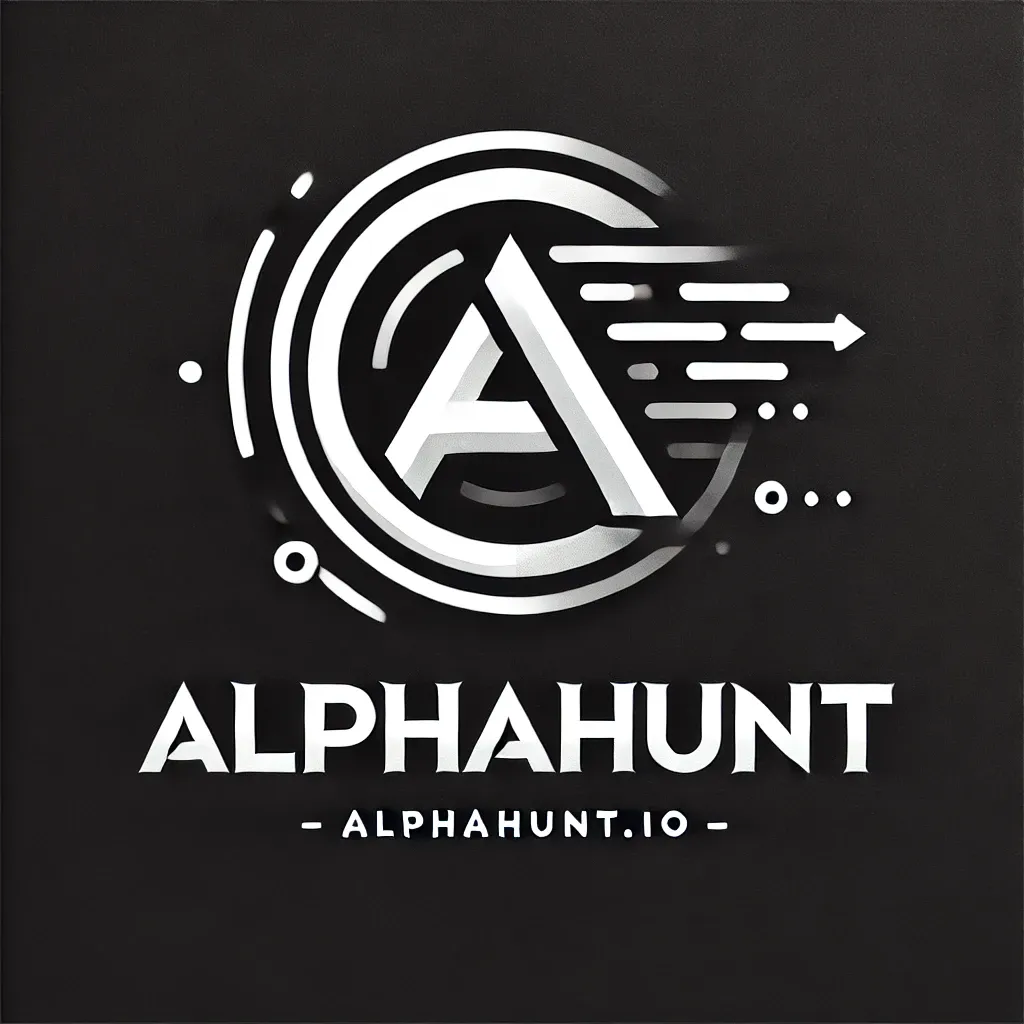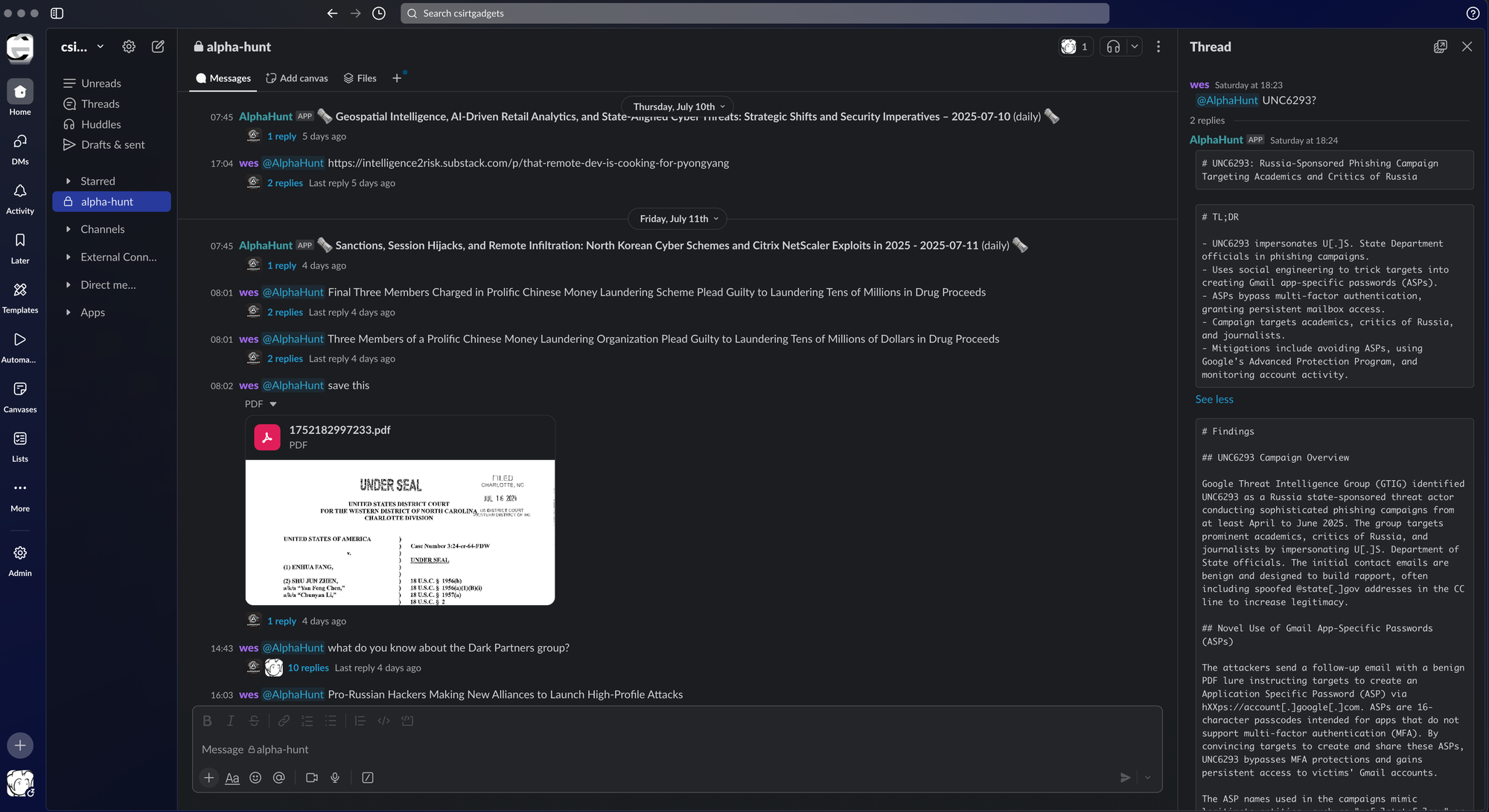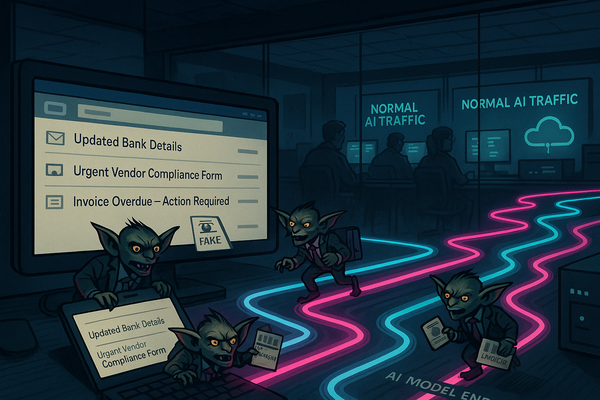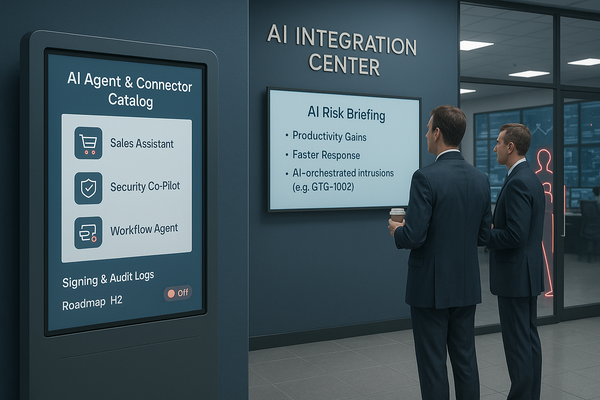Typhoon by Consent: Quiet, Durable, Everywhere
One “Allow” → tenant-wide weather event. 🌀 AI agent phish wraps the consent flow, device-code keeps churning, and Typhoon rides “good” U.S. infra. Kill list: user consent, device-code, or EWS app perms—what’s first?

TL;DR
Key Points
-
Expect identity-first persistence using illicit consent, device code flow misuse, refresh-token replay, and service principal credential additions.
-
Anticipate edge-to-cloud pivots from SharePoint and VPN exploits to Microsoft 365 via Graph and EWS.
-
Watch upstream exposure through managed service providers (MSPs), remote monitoring and management (RMM), and privileged access management (PAM) platforms.
-
Track US-based camouflage via VPS and residential proxies, plus covert networks that suppress geo-risk signals.
-
Enforce admin-only consent for high-risk scopes and multi-tenant apps; block or condition device code flow.
-
Implement device-bound tokens (token protection) and automate tenant-wide token and consent rollback; rehearse with providers quarterly.
AlphaHunt
Stop doomscrolling, start decisioning. We chewed through the muck so your team doesn’t have to. → Subscribe! • Forward to your on-call lead.
(Have feedback? Did something resonate with you? Did something annoy you? Just hit reply! :))
The story in 60 seconds
PRC “Typhoon” clusters are prioritizing identity-first intrusions: OAuth consent abuse, service principal manipulation, and token replay for quiet, durable access across cloud and major SaaS. Edge exploitation—especially on-premises SharePoint—remains the on-ramp to harvest MachineKey and credentials before pivoting to Microsoft 365 via Graph and EWS. Upstream compromises of MSP, RMM, and PAM providers expand reach across many tenants with little endpoint signal.
Observed 2024–2025 baselines: spikes in Add servicePrincipalCredentials (new app credential added), dormant apps invoking Graph/EWS with application permissions, and SharePoint spinstall*.aspx artifacts followed by Graph mail reads; rising device code flow usage and US-based proxy IPs that suppress geo-risk signals. In 2026, SaaS-to-SaaS lateral movement through connectors and automation platforms will grow.
For platforms, identity providers (IDPs), and SaaS, one misgoverned consent or upstream secret can cascade across hundreds of tenants. Strong consent governance, device-bound tokens, KEV-aligned patching, and practiced mass revocation materially reduce attacker durability and spread.
High Impact, Quick Wins
- Cut revoke and rollback mean time to resolve to 60 minutes or less by deploying device-bound tokens and automating tenant-wide revocation, rehearsed with providers.
- Reduce KEV-to-patch median to seven days or less by hard-patching SharePoint and rotating MachineKey with IIS restarts and artifact re-hunts.
- Shrink cross-tenant blast radius by requiring admin approval for high-risk scopes and all multi-tenant apps, allowing only verified publishers.
Why it matters
SOC
- Identity signals: Add servicePrincipalCredentials spikes (new app credential added), scope expansions and publisher changes, dormant apps invoking Graph/EWS with application permissions.
- Sign-in risk: US-based but new network origins (client autonomous system), unusual user agents, device-bound versus unbound token mismatches (tokenProtectionStatus), elevated device code flow events.
- Edge cues: spinstall*.aspx creation, w3wp.exe spawning PowerShell or CMD with Base64, bursts of SharePoint reads after artifact creation.
IR
- Preserve: Entra ID Audit and Sign-in, Microsoft 365 Unified Audit (Consent and AppInvocations), Graph activity, Key Vault resource logs, Entra Connect Health, IIS/Windows/Sysmon.
- Triage chain: edge exploit → MachineKey exposure → token anomalies → service principal credential additions → Graph/EWS collection.
- Evidence to capture: app and service principal IDs, certificate thumbprints, tokenProtectionStatus, federation/sync rule changes, Key Vault Secrets/List/Get bursts.
SecOps
- Tighten consent and connectors: admin-consent-only for high-risk scopes, verified publishers, allow lists for high-risk SaaS connectors.
- Harden identity fabric: inventory service principals, alert on secret and certificate rotations, auto-disable dormant high-scope apps, condition or block device code flow.
- Reduce exposure: remove admin surfaces from the internet, enforce private access or client certificates for legacy apps.
Strategic
- Treat identity, app-consent, and provider access as top-tier trust boundaries; require mass revocation APIs, forensics-ready logs, and compromise SLAs in contracts.
- Drill quarterly: SharePoint MachineKey exposure, multi-tenant app credential addition, and MSP/RMM compromise scenarios.
- Track leading indicators: revoke and rollback MTTR, KEV patch windows, verified publisher coverage, provider security addenda adoption.
See it in your telemetry
Network
- Spot US-based camouflage: in-region sign-ins from new autonomous systems accessing high-scope app endpoints; baseline and alert on deviations.
- SharePoint edge: external access to newly created .aspx artifacts and sudden SharePoint API read surges after web shell writes.
- Provider routes: provider IP/ASN accessing multiple tenants’ admin/API surfaces; unusual cross-tenant patterns.
Endpoint
- SharePoint/IIS hosts: w3wp.exe spawning cmd.exe or powershell.exe with encoded commands, unusual .NET assemblies in SharePoint paths, AMSI script block hits.
- Entra Connect: connector credential resets, staging/production flips, unexpected writeback enablement or federation/certificate changes (Windows Event Logs and Connect Health).
- Secrets access: mass Key Vault list/get/export by atypical service principals; cross-vault access from new tenants or autonomous systems (Azure Resource Logs).
AlphaHunt Converge - Plug in your Flight Crew
Get intelligence where it counts. No dashboards. No detours. AlphaHunt Converge teases out your intent, reviews the results and delivers actionable intel right inside Slack. We turn noise into signal and analysts into force multipliers.
Anticipate, Don’t Chase
2026 Outlook: How PRC “Typhoon” Clusters Will Evolve Against US Technology — From Identity-First Intrusions to SaaS-to-SaaS Lateral Movement
TL;DR
- Identity-first intrusions will intensify: OAuth/app-consent abuse, device code flows, and token replay for quiet, durable access across cloud and SaaS.
- Edge-to-cloud on-ramps persist: rapid exploit-to-ops against internet-facing apps (e.g., SharePoint, VPNs) to bootstrap cloud identity compromise.
- Upstream scale: expanded focus on MSPs, RMM/ITSM, PAM, and multi-tenant apps to cascade access into US tech customers.
- Operational camouflage: US-hosted VPS/residential proxies and “covert networks” to blend sign-ins, shrink anomaly signal, and evade geofencing.
- Preparedness: govern OAuth at scale, bind tokens to device/trust signals, harden app-consent, accelerate KEV patching, and rehearse mass token/consent rollback.
Why this matters for US technology leadership in 2026
- Observed shifts in 2024–2025 show PRC clusters normalizing identity-centric tactics plus rapid exploitation of new edge CVEs, then pivoting into Microsoft 365/Azure and major SaaS via abuse of applications, service principals, and tokens.
- Microsoft and CISA highlight sustained targeting of edge services and on-prem SharePoint chains by multiple PRC actors (e.g., Violet, Linen) with fast follow-on to credentials, machine keys, and cloud identities.
- A distinct PRC cluster (Silk Typhoon) escalated supply-chain tradecraft against MSPs, RMM/ITSM, PAM, and cloud app providers to reach downstream tenants at scale.
- For US technology firms (platforms, SaaS, IDP, MSPs, integrators), this creates asymmetric risk: one upstream weakness or app mis-governance can cascade across hundreds of tenants.
- Leadership priority: treat identity, app-consent, and upstream providers as national-level trust boundaries; fund governance and incident playbooks that can revoke tokens and roll back consents rapidly across many tenants.
What we know now (2024–2025 baselines)
- Supply-chain and provider focus (Silk Typhoon):
- Targeted IT providers, RMMs, MSPs, PAM, and cloud app vendors; abused stolen API keys/privileged credentials to access downstream tenants; pivoted from edge zero-days to cloud identities and app/service principal abuse for eDiscovery/Graph/EWS data theft.
- Used “covert networks” (compromised appliances/routers/NAS) to obfuscate operator traffic and blend regionally appropriate sign-ins.
- Edge exploitation as a launchpad (multiple PRC clusters):
- Active exploitation of SharePoint ToolShell chain led to credential/key theft, web shells, and rapid post-exploitation. Microsoft observed Linen Typhoon, Violet Typhoon, and a China-based Storm cluster exploiting unpatched servers; Unit 42 corroborated exploit telemetry and ransomware piggybacking.
- Identity-first tradecraft, cloud persistence:
- Post-compromise use of OAuth apps/service principals (pre-consented or attacker-created) to harvest mail/SharePoint/OneDrive via Graph and EWS; addition of new credentials to existing apps; creation of multi-tenant apps to move cross-tenant.
- Operational cover in US regions:
- Blending sign-ins through proxies/VPS and covert networks to match victim geography and minimize risk-based policy triggers.
2026 Evolution
(most likely branches and drivers)
- Incentives: strategic intel collection, pre-positioning for crisis options, scalable reach via identity and upstream providers, and low-noise persistence in cloud/SaaS.
- Constraints: improving Conditional Access, OAuth governance, KEV-driven patching; better anomaly models; app publisher verification; stronger device-bound auth.
- Adversary adaptation loop: move from single-tenant compromises to cross-tenant/“SaaS-to-SaaS” movement; prefer app-to-app and automation tokens; increase device-bound token bypass attempts.
2026 Scenarios
(ranked by likelihood/impact for US tech)
| Scenario (2026) | Description | Primary Benefits to Adversary | Key Defenses to Prepare Now |
|---|---|---|---|
| Identity-first persistence at scale | Illicit consent, service principal manipulation, device code/PRT abuse; refresh tokens for durable access; expand pre-consented multi-tenant app abuse | Long-lived access without malware; low EDR signal; cross-workload data reach | Enforce admin-consent-only for high-risk scopes; device-bound auth and token binding; continuous consent review; alert on app secret/cert changes and non-ROP C2 via Graph/EWS |
| Edge-to-cloud accelerants | Rapid exploitation of new edge CVEs (e.g., SharePoint, VPNs) to harvest keys/creds and jump to cloud | Shorten exploit-to-ops; bypass email security; seed identity compromise | KEV-aligned patch SLAs; AMSI/AV hardening; rotate machine keys/secrets on patch; take internet-facing legacy workloads off the open internet or gate behind auth |
| Upstream provider/IT supply-chain scale | Compromise RMM, ITSM, PAM, cloud data protection, MSP panels to cascade to downstream tenants | Multi-tenant reach; privileged API access; operational stealth | Third-party app consent governance; least-privileged scopes; provider segmentation; contractually mandated security attestations and compromise reporting |
| SaaS-to-SaaS lateral movement | Use app connectors, automation platforms, and cross-app tokens for lateral movement between SaaS estates | Moves outside classic network perimeters; evades endpoint-centric controls | Catalog and gate inter-SaaS connectors; require admin approval for high-risk connectors; monitor unusual app-to-app data flows, app sprawl, and shadow integrations |
| US-geo operational camouflage | Increased use of US-hosted VPS/residential proxies/covert networks to match tenant geos and suppress sign-in risk | Evade geo/risk heuristics; blend with normal tenant patterns | Per-request device posture and token binding; step-up auth on token anomalies; detect “new ASN + high-scope app calls”; private access for admin surfaces |
TTPs most likely to persist or grow
- Initial access
- Exploit Public-Facing Application (T1190) — on-prem SharePoint, gateways, VPNs.
- Valid Accounts (T1078) + External Remote Services (T1133) — harvested credentials, API keys, and provider consoles.
- Persistence and privilege
- Account Manipulation (T1098) — app/service principal credential addition; role changes.
- Web Shell (T1505.003) and Server Software Component: IIS (T1505.004) — post-exploitation on edge/SharePoint.
- Create or Modify System Process: Windows Service (T1543.003) — persistence on compromised servers.
- Credential and token abuse
- OS Credential Dumping: LSASS (T1003.001) — on compromised servers.
- Use Alternate Authentication Material: Web Session Cookie (T1550.004) — session hijacking; “pass-the-cookie.”
- Phishing for Information/Consent (via OAuth) — aligns with identity-focused initial access and persistence (covered across multiple ATT&CK techniques: T1566 family + T1098 patterns).
- Lateral movement and collection
- Windows Management Instrumentation (T1047) and Impacket tool use.
- Automated Collection (T1119) via Graph/EWS/eDiscovery.
- Exfiltration to Cloud Storage/Services (T1567.002) — low-noise egress.
- Defense evasion and C2
- Impair Defenses: Disable or Modify Tools (T1562.001) — registry/Defender changes.
- Proxy (T1090) — fast reverse proxy, covert networks, regionally appropriate proxies.
Priority vertical risks inside US technology
- Cloud/SaaS Platforms and IDPs
- Risk: illicit consent, app impersonation, service principal takeover, ungoverned multi-tenant apps.
- Action: default-deny on user consent for high-risk scopes; publisher verification and admin-only consent; device-bound session tokens and token binding.
- MSPs, RMM/ITSM, and DevOps tooling
- Risk: upstream access into customer tenants; privileged API surfaces; secret stores (vaults).
- Action: just-in-time access; workload identity attestation; per-customer isolation; strict logging and cross-tenant anomaly models.
- Collaboration and file services
- Risk: Graph/EWS mass collection; eDiscovery abuse; silent OneDrive/SharePoint enumeration.
- Action: monitor unusual Graph patterns; alert on new app credentials; step-up when data calls deviate from baseline.
Recommendations, Detections, Actions, Suggested Pivots, Forecasts, Next Steps and References..
(Specially baked, for Paid Subscribers..)






